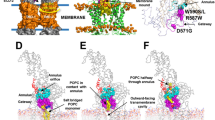Abstract
Forty-nine ABC protein genes exist on human chromosomes. Eukaryotic ABC proteins were originally recognized as drug efflux pumps involved in the multidrug resistance of cancer cells. However, it is now realized that one of their major physiological roles is cellular lipid transport and homeostasis, and their dysfunction is often associated with human diseases. ABCA1 and ABCA7 mediate the apolipoprotein-dependent formation of a high-density lipoprotein–cholesterol complex. ABCA3 is indispensable for pulmonary surfactant secretion. ABCG5 and ABCG8 are involved in the secretion of plant sterols and cholesterol into bile. However, the primary substrates and mechanism of action of these ABC proteins have not been precisely defined. In this review article, we first describe the general structure and functions of eukaryotic ABC proteins. The current model of ABCA1 functionality is then explained based on studies on a topological model, subcellular localization, apoA-I dependence of HDL formation, functional defects of Tangier disease mutants, and ATP hydrolysis of purified ABCA1. ABCA1 is supposed to function as a transporter of lipids as well as a receptor for apoA-I. ABCA3 is likely involved in accumulating phospholipids and cholesterol in lamellar bodies and in generating multivesicular structures.
Similar content being viewed by others
Author information
Authors and Affiliations
Corresponding author
Rights and permissions
About this article
Cite this article
Takahashi, K., Kimura, Y., Nagata, K. et al. ABC proteins: key molecules for lipid homeostasis. Med Mol Morphol 38, 2–12 (2005). https://doi.org/10.1007/s00795-004-0278-8
Received:
Accepted:
Issue Date:
DOI: https://doi.org/10.1007/s00795-004-0278-8




